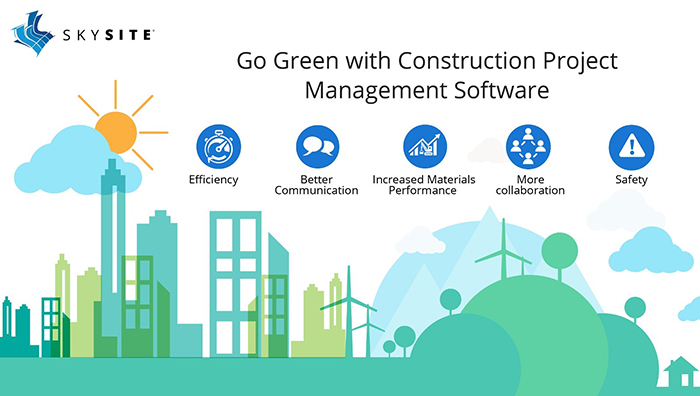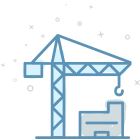There are many reasons to incorporate a digital document management system like SKYSITE Projects into your workflow. The big ones, of course, are cost, mobility, convenience, organization, and speed. But during the past several years, considerations around environmental sustainability have come to play a more important role in the ROI of your system.
Consider the following quote from a retail store construction manager:
“The way we used to handle blueprints was incredibly wasteful. We’d have a new set of hundreds of documents made every time we had 10 percent or more of the drawings go through changes. That could happen in a day! After a while it looked like we were stacking rolls of blueprints under the job trailer as if they were firewood!”
This description is familiar if you’ve been in commercial construction for any length of time. And while we might not have thought much about it years ago, today the costs, time, and resources represented by that “firewood” makes no sense at all, especially when considered from a sustainability standpoint.
So-called “green” initiatives now encompass issues such as more efficient construction management, better communication, increased materials performance, more collaboration, and even safety. If you use construction project management software, you’ve already experienced these benefits whether you know it or not.
Efficiency can take on many meanings, but in the context of less waste and rework, keeping the documents up-to-date and in the cloud is an easy win.
Better communication improves outcomes, project schedules, budgets, and the working environment on the jobsite. Enabling RFI’s, submittals and punchlists on mobile devices — not to mention distributing construction documents in real time as they are updated — can keep communication fluid, reduce re-work, tear-outs, and dramatically decrease waste.
Increased materials performance does a great deal to contribute to a more sustainable project, and there are lots of ways to think about it. Sure, achieving a higher R-value with insulation, drywall, or exterior cladding creates a more efficient building, but think about the material performance of paper, especially when there’s so much of it being used in project documentation. It’s only single use, it suffers from quick obsolescence, and even if it’s recycled, it still ends up in a landfill. By contrast, it’s tough to beat the ever-renewable materials performance of a pixel on a screen.
More collaboration keeps everyone on the same page and boost both productivity (getting more done) and efficiency (less work for the same or better outcome). Using construction project management app is far more than just one place for data; it’s also one place for people to interact in a way that’s planned for, understood, and controlled. Outcomes are less costly and more sustainable because they are predictable, accurate and correct.
Safety issues can bust a budget or wreck a schedule faster than almost any other problem on a job site. While not on everyone’s “sustainability” list, keeping the job from slowing down, or worse, coming to a complete standstill, is a natural consequence of better efficiency, communication, increased materials performance, and greater collaboration.
Let’s face it, nothing is sustainable, much less “green” unless it’s completed, on time, built to spec, and compliant with regulations and contract stipulations. A coordinated implementation of a well-designed construction project management system like SKYSITE Projects can do wonders for sustainable business, projects, and your company’s performance.
Thinking about how your company could work more sustainably, increase efficiency and be more competitive on the “green” front? Sign up for a free trial today and find out how “going green” means going with SKYSITE Project.





